Best Coding Books to Buy in December 2025
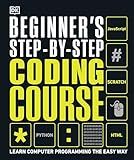
Beginner's Step-by-Step Coding Course: Learn Computer Programming the Easy Way (DK Complete Courses)



Everything You Need to Ace Computer Science and Coding in One Big Fat Notebook: The Complete Middle School Study Guide (Big Fat Notebooks)


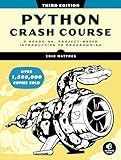
Python Crash Course, 3rd Edition: A Hands-On, Project-Based Introduction to Programming


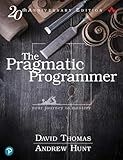
The Pragmatic Programmer: Your Journey To Mastery, 20th Anniversary Edition (2nd Edition)


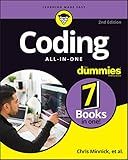
Coding All-in-One For Dummies (For Dummies (Computer/Tech))


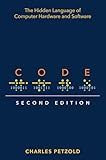
Code: The Hidden Language of Computer Hardware and Software


In Haskell, you can write a for loop using a combination of recursion and pattern matching. Here's an example of how you can write a basic for loop:
-- Define a function to represent the for loop forLoop :: (Ord a, Enum a) => a -> a -> (a -> IO ()) -> IO () forLoop start end action | start <= end = do action start forLoop (succ start) end action | otherwise = return ()
In the above code, start and end represent the start and end values for the loop, and action is the function that gets executed in each iteration. The action function takes the loop variable as its argument.
Here's an example usage of the forLoop function:
main = do putStrLn "Counting from 1 to 5:" forLoop 1 5 (\x -> putStrLn ("Count: " ++ show x))
This will output:
Counting from 1 to 5: Count: 1 Count: 2 Count: 3 Count: 4 Count: 5
In this example, we pass a lambda function ((\x -> putStrLn ("Count: " ++ show x))) as the action argument, which prints the count value in each iteration.
Note that Haskell encourages a functional programming style, where explicit loops are less common compared to recursion and higher-order functions. However, when necessary, you can write a for loop using the aforementioned approach.
How to write an infinite loop using a for loop in Haskell?
In Haskell, you can use recursion instead of a traditional for loop to create an infinite loop. Here's an example:
infiniteLoop :: a -> [a] infiniteLoop x = x : infiniteLoop x
In this code, the infiniteLoop function takes an input x and returns an infinite list consisting of repeating x. This is achieved by recursively adding x to the head of the result list.
You can use this function to simulate an infinite loop by consuming elements from this list. However, it's important to note that you need to find a way to terminate this loop explicitly, such as using a signal or condition, as Haskell has lazy evaluation and will only evaluate elements of the list as needed.
What is the scope of variables inside a for loop in Haskell?
In Haskell, variables defined in a for loop are scoped only within the loop itself. This means that they are not accessible from outside the loop or from code that comes after the loop. Each iteration of the loop has its own set of variables, which are discarded at the end of the iteration.
For example, consider the following code:
main = do forM_ [1..5] $ \i -> do putStrLn ("Current value: " ++ show i)
In this code, the variable i is defined as the loop counter. It is only accessible within the loop, and each iteration of the loop has its own i variable. Trying to access i outside the loop will result in a compilation error.
The same is true for any variables defined within the loop body using let or where. They are only accessible within the loop and are discarded at the end of each iteration.
What is the difference between a for loop and a map function in Haskell?
A for loop and a map function are two different concepts in Haskell.
A for loop is a control structure used in imperative programming languages (like C, Java, etc.) to repeat a block of code a certain number of times or until a certain condition is met. It allows for mutable state and often involves mutable variables or counters. However, Haskell is a purely functional language, which means it doesn't have built-in support for mutable state or loops like for loops.
On the other hand, the map function is a higher-order function in Haskell that is used to apply a given function to each element of a list, resulting in a new list with the transformed values. The map function takes two arguments: the function to be applied and the list on which to apply that function. It applies the function to each element of the list and returns a new list with those transformed values, leaving the original list unchanged.
Here's an example to demonstrate the difference:
Using a for loop in Java:
for (int i = 0; i < 5; i++) { System.out.println(i); }
Using the map function in Haskell:
map (\x -> x * x) [1, 2, 3, 4, 5]
Output: [1, 4, 9, 16, 25]
In the Java example, a for loop is used to iterate through the numbers 0 to 4 and print them. In Haskell, the map function is used to square each element of the list [1, 2, 3, 4, 5]. The map function applies the lambda function (\x -> x * x) to each element of the list and returns a new list [1, 4, 9, 16, 25].
So, the key difference is that a for loop is a looping control structure used in imperative programming languages to mutate a state and repeat a block of code, whereas the map function in Haskell is a higher-order function that applies a given function to each element of a list, returning a new list without modifying the original.
How to write a for loop with a step size in Haskell?
In Haskell, you can write a for loop with a step size using recursion. Here's an example of a for loop that counts from a start value to an end value with a specified step size:
-- Define a helper function to generate the list of values range :: Int -> Int -> Int -> [Int] range start end step | start > end = [] | otherwise = start : range (start + step) end step
-- Define your for loop forLoop :: Int -> Int -> Int -> IO () forLoop start end step = do let values = range start end step -- Perform some action for each value in the range mapM_ (\value -> putStrLn $ "Current value: " ++ show value) values
In this example, the range function recursively generates a list of values starting from the start value, incrementing by the specified step value, until the end value is reached. The forLoop function then performs some action (putStrLn $ "Current value: " ++ show value) for each value in the generated range.
To use the for loop, you can call the forLoop function with the desired start, end, and step values. For example:
main :: IO () main = do forLoop 1 10 2
This will output:
Current value: 1 Current value: 3 Current value: 5 Current value: 7 Current value: 9
